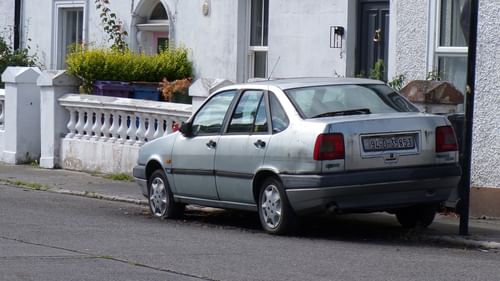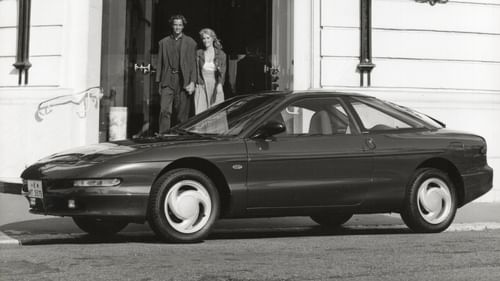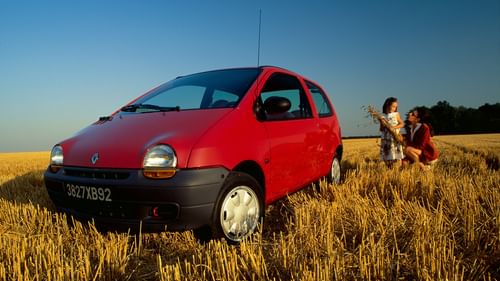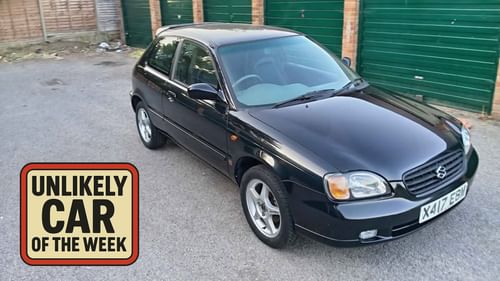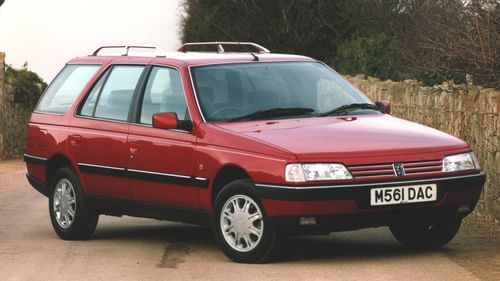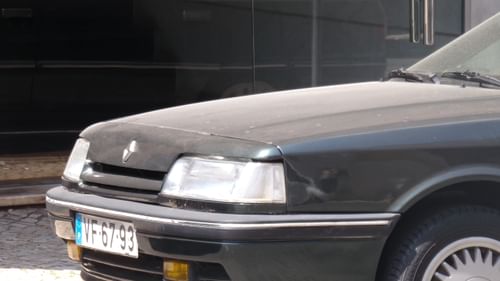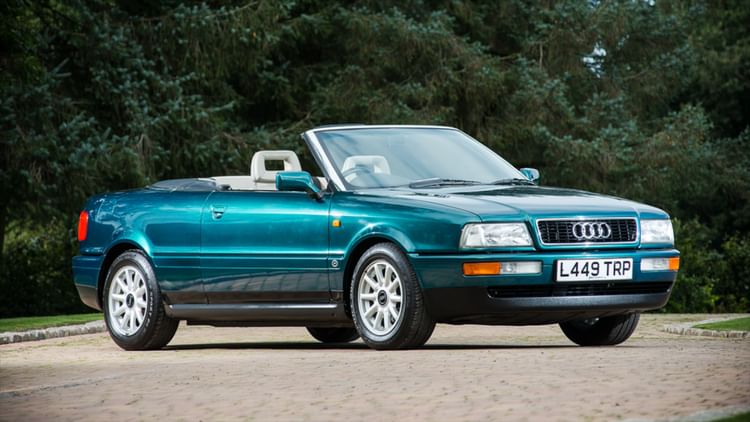
Sexy wasn’t a word you’d use to describe Audi in the summer of 1992. Sophisticated, yes. Stylish, probably. Safe, most certainly. But sexy? Not really. Its brand was built on solidity, aerodynamics and engineering excellence. ‘Vorsprung durch Technik’, as Geoffrey Palmer famously drawled.
Its range brochure from the period is blissfully free of glamour and lifestyle nonsense. Yes, there’s a chap stood with his horse alongside an Audi 80 Estate, a guy driving a Coupé S2 on a sun-drenched coastal road, and a serious-looking gentleman in his V8 (‘Audi’s understated luxury saloon’), but it’s a very low-key affair. Talk of four-wheel drive, drag co-efficient figures, galvanised car bodies and direct injection diesel engines was designed to appeal to Audi’s very specific but small group of followers. In the years before Audi invested heavily in celebrity endorsements, huge sponsorship deals and product placement, breaking free of the confines of the motoring media was about as likely as a London stockbroker ditching his BMW or Porsche.
The winds of change blew in when Audi decided to lower the roof. ‘This elegantly styled car brings open air motoring to Audi for the first time while also building a convertible with the rigidity of a saloon,’ the company said in 1991 ahead of the car’s UK launch in 1992. Early promotional material referred to the car as both the Audi Convertible and Audi Cabriolet, but the latter stuck and became the company’s sole ragtop into the early millennium. Clearly part of the 80 family, although rarely marketed as such, the Cabriolet was based on the Audi Coupé and used the same lowered suspension. Despite Audi’s claims that ‘the result is an authentic 2+2 sports car’, this was a car for boulevards rather than B-roads. Or, as the brochure suggested, for parking on a bridge over the Thames to gaze at the scaffolding on the Houses of Parliament with your significant other. Crucially, the brochures also showed the car being driven by blonde women. One day, the Audi Cabriolet would be driven by the most famous blonde woman on the planet: Diana, Princess of Wales.
At the time of the Cabriolet’s launch in 1992, Diana was still Her Royal Highness the Princess of Wales, following her marriage to Prince Charles in 1981. By the end of the year, Prime Minister John Major announced the official separation of the Prince and Princess of Wales, with the divorce finalised in August 1996. An admittedly potted history of Princess Diana’s fractious relationship with the Royal Family, but this isn’t Hello! magazine. Yes, the princess did drive a Mini Metro.
Princess Diana had form with a German. Her decision to lease a Mercedes-Benz 500 SL in December 1991 went against Royal protocol and made her the first member of the Royal Family to drive a foreign car. Buckingham Palace said she was leasing it ‘for her personal use’ and that she would continue to use her Jaguar XJ-S Cabriolet (E763 KYX) for official duties. Her love affair with J548 LRP was short-lived; in response to criticism from the government and trade unions, she returned the car in September 1992, and today it sits alongside a Popemobile in the Mercedes-Benz Museum.
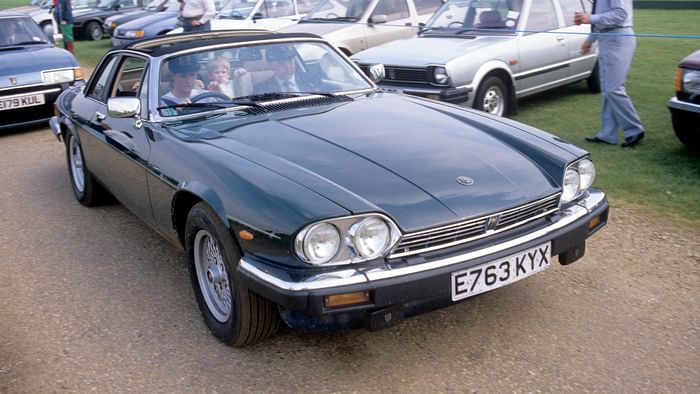
Princess Diana reportedly fell in love with the Audi Cabriolet having borrowed one from her friend Serena Armstrong-Jones, the wife of Viscount Linley. It was around this time when she announced her plan to retire from public life, saying she would be ‘reducing the extent of the public life [she] had led so far’. Audi’s understated Cabriolet was the ideal car for Princess Diana’s semi-retirement and a major coup for the brand.
The car launched with a 2.3-litre five-cylinder engine mated to either a manual gearbox or a four-speed automatic transmission. Structural reinforcements included additional cross-members, beefier door sills, braced centre tunnel and stronger pillars, while a reinforced windscreen frame negated the need for an ugly, Ford Escort-style rollover hoop. Audi’s Procon-Ten safety system, first seen in 1986 on the 80, was fitted as standard. In the event of an impact, the steering wheel pulls away from the driver’s head and the front seatbelts are tensioned. At £21,995 (£46,500 in today’s money), it cost £3000 more than the 2.3E Coupé. The price of a liquid lunch in a Kensington restaurant.
Not that Princess Diana considered the price. Instead, she was lent a Cabriolet by Dovercourt Audi of St John’s Wood, after the enterprising dealer recognised the publicity potential of loaning a car to the most photographed woman in the world. In the days before influencers and social media, a product placement with a proper A-lister was worth its weight in gold; certainly more than the cost of lending a car to a princess. It was a stroke of genius. In 1994, Audi said sales almost doubled after Diana was spotted behind the wheel of a Cabriolet, reportedly adding £10.2 million in annual revenue. Quattro and WRC success may have kickstarted Audi’s revolution within enthusiast circles, but Princess Diana carried the brand into the mainstream. In the eyes of Tatler, Hello! and tabloid readers, the Cabriolet was fit for a princess. A classic tale of ragtop to riches.
The evidence is overwhelming. According to a 1997 report in The Independent, a magazine with a picture of Princess Diana on the cover could see circulation increase by as much as 30--40 percent. Media commentator Michael Leapman said: ‘Her effect on circulation was quite phenomenal. That is why her picture appeared on so many covers. There hasn’t really been anything like that, except for maybe Liz Taylor in the old days or Princess Grace of Monaco, and there wasn’t the same level of hysteria.’ According to a 1994 survey by Majesty magazine, Princess Diana generated £14.5 million worth of publicity for products when measuring the column-inches of mentions in the tabloid press. Audi got a slice of this publicity, and it was all thanks to a London car dealer.
As Jeremy Clarkson noted in his book Clarkson on Cars, ‘She [Diana] alone has turned what might have been just another nice car into by far and away the coolest and most sought-after-four-wheeled status symbol of them all. And it didn’t cost Audi a penny.’
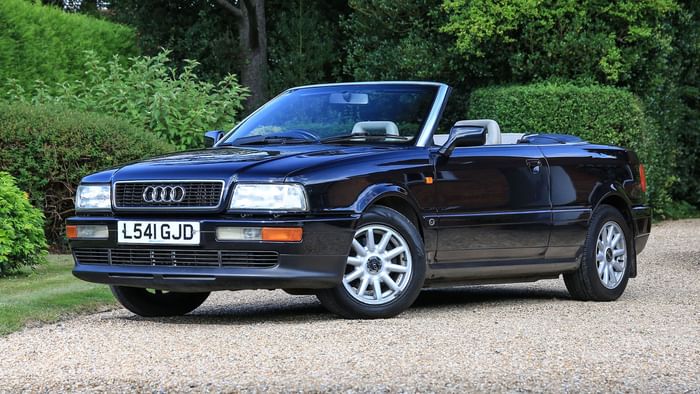
It’s difficult to imagine Princess Diana driving anything other than an Audi Cabriolet. You couldn’t see the young Princes William and Harry travelling in the back of an ageing BMW 3 Series Convertible. And while the Saab 900 Convertible benefited from the same understated class as the Audi, it was more Surrey stockbroker than royal ragtop. The Volkswagen Golf Cabriolet? It would be a stretch to suggest the ‘people’s princess’ would be seen behind the wheel of a people’s car. Her days of Metros and Escorts were behind her.
Tragically, the Audi Cabriolet outlived Princess Diana, who was killed in a car crash in Paris in 1997. It’s difficult to say if the Cabriolet would have enjoyed a decade in production without the support of a princess, but it remained on sale long after the 80 had made way for the A4. The end of production was marked by a ‘Final Edition’, with Audi loading the car with £3450 worth of kit for a modest increase in price. By then, the Cabriolet had been offered with a range of engines, including 1.8 and 2.0-litre four-cylinder units and a brace of six-cylinder lumps. In 1998, Karmann took over the production of the Cabriolet, ahead of the launch of the all-new A4 Cabriolet in 2002. The German coachbuilder built around 12,000 Cabriolets at its Rheine plant between 1997 and 2000, contributing to overall sales of around 72,000 for the classic droptop.
Today, you can buy an Audi Cabriolet for anything between £1000 and £5000, and while it won’t hold a candle to a sporting ragtop, it’s perfect for enjoying a few fading sunsets before raising the roof when the rain sets in. Few cars of the era have aged as gracefully as the Cabriolet; proof, once again, that fashions fade but style is eternal.
There’s little doubt that Princess Diana played a significant role in the creation of the modern Audi brand. An influencer before influencers were a thing and the most photogenic woman on the planet – Audi couldn’t have wished for a better association. One wonders what would have happened to Rover had the princess decided to buy British. Does anyone fancy a Rover 100 Cabriolet?
This article first appeared in issue 5 of Classic.Retro.Modern. magazine. Audi images © CCA and Historics. Jaguar image © London Classic Car Show and PA Images (via Newspress)
